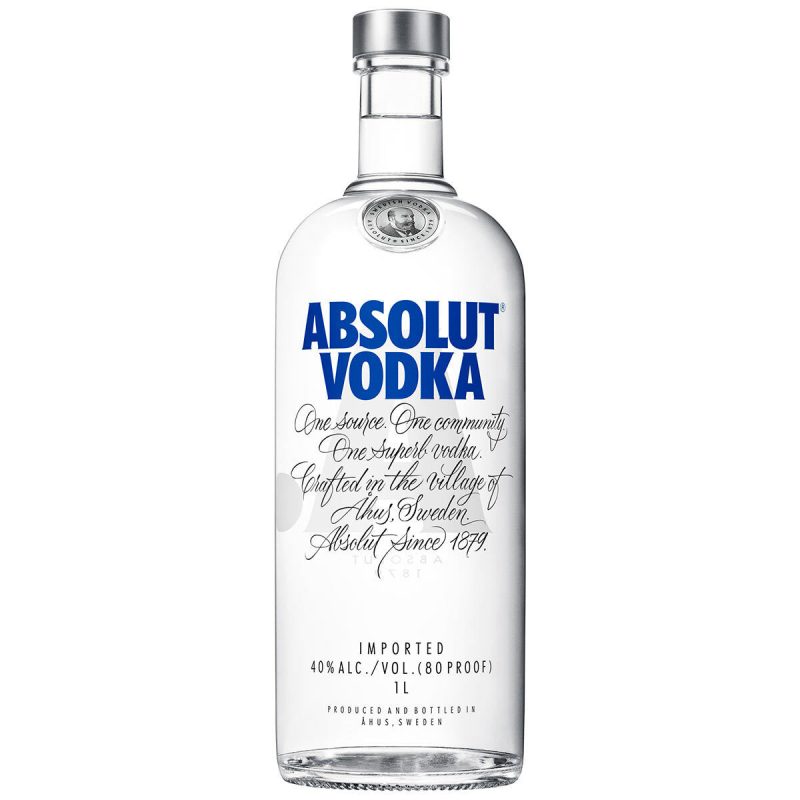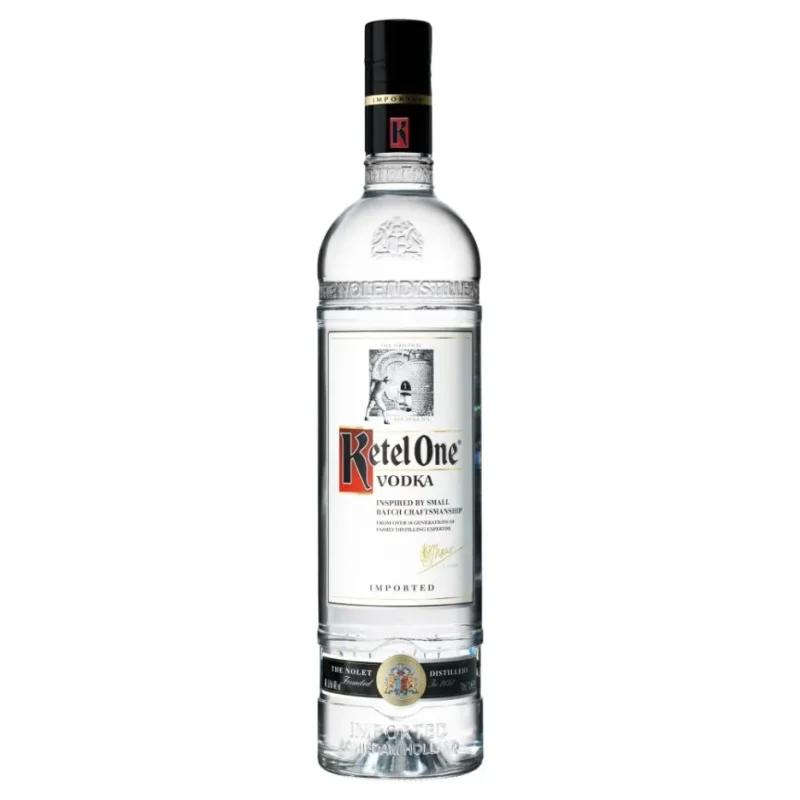Have you ever wondered why that creamy, pinkish sauce that adorns your favorite pasta dish is called vodka sauce? After all, vodka is a clear, odorless, and virtually tasteless spirit, and yet it's responsible for one of the most delectable sauces in Italian-American cuisine. Let's dive into the history, ingredients, and flavor profile of this mysterious sauce that has won the hearts of pasta lovers worldwide.
Best Budget Vodkas Ranked
Why Is It Called Vodka Sauce Table of Contents
Key Ingredients of Vodka Sauce
Preparing and Pairing Vodka Sauce
Looking For The Best Vodka? You'll Love These Vodka Guides...
Origins of Vodka Sauce
Vodka sauce is a relatively modern concoction in the world of traditional Italian sauces. It emerged in the 1970s, and according to popular lore, it was first attempted in Italy. Many speculate that the sauce was created to introduce vodka, a popular Russian spirit, into Italian cuisine. However, vodka sauce truly gained fame and popularity in the United States, where it became an Italian-American culinary staple.
Key Ingredients of Vodka Sauce
Vodka sauce's signature flavors come from a combination of tomato sauce, cream, onions, garlic, and a shot of vodka. This marriage of ingredients creates the pinkish hue that distinguishes vodka sauce from other pasta sauces. The vodka's purpose in the sauce can be attributed to a few factors:
1. Enhancing Flavor
While vodka itself may not contribute a distinct flavor, its alcohol content helps extract and heighten the flavors from other ingredients such as tomatoes and garlic. The result is a more pronounced and complex taste in the final sauce.
2. Improved Texture
In addition to enhancing flavors, vodka also plays a role in creating the velvety, smooth texture of the sauce. Its alcohol content helps to emulsify the fat from the cream and the acidic notes from the tomato sauce.
3. Culinary Fusion and Marketing Appeal
Some argue that the addition of vodka is more about fusing Italian and Russian culinary influences or creating a unique marketing angle. Vodka's popularity and strong association with Russian culture might have compelled some chefs to experiment with its inclusion in a classic Italian sauce.
Whatever the initial reason for its creation, vodka sauce has grown to become a staple of Italian-American cuisine due to its sumptuous flavor and texture, and it pairs beautifully with pasta dishes like penne alla vodka.
Preparing and Pairing Vodka Sauce
Vodka sauce's appeal lies in its simplicity and versatility. It's relatively easy to prepare and can be customized with a variety of ingredients to suit your taste. Popular additions include pancetta, prosciutto, shrimp, and even vegetarian options like mushrooms and peas.
When pairing vodka sauce with pasta, opt for short, thick pasta types with ridges such as penne, rigatoni, or fusilli, which allow the sauce to cling onto their surface. Complete the dish with a sprinkling of Parmesan cheese and chopped fresh parsley.
Why Is It Called Vodka Sauce Example:
Penne Alla Vodka Recipe
- In a deep skillet, heat 2 tablespoons of olive oil over medium heat. Add ½ cup finely chopped onion and 2 minced garlic cloves, and sauté until onions are translucent.
- Add 1 cup tomato sauce and let it simmer for 5-7 minutes.
- Stir in ½ cup vodka and let the sauce simmer for an additional 7 minutes, allowing the alcohol to evaporate.
- Reduce heat to low, add ½ cup heavy cream and stir until well combined, resulting in a smooth, pinkish sauce.
- Toss the sauce with cooked penne pasta, garnish with Parmesan cheese and chopped fresh parsley, and serve.
Frequently Asked Questions
What is vodka sauce?
Vodka sauce is a rich and creamy tomato-based sauce that typically includes heavy cream, tomato paste, onions, and vodka. It is often seasoned with salt, pepper, and sometimes red pepper flakes for a touch of heat, serving as a popular sauce for pasta dishes.
Why is it called vodka sauce?
The name "vodka sauce" comes from the use of vodka as a key ingredient. The addition of vodka to the sauce creates a unique flavor profile and helps to emulsify the tomatoes and cream. Even though the vodka itself doesn't dominate the taste, it's crucial to the sauce's identity.
Does vodka sauce contain actual vodka?
Yes, vodka sauce includes actual vodka. However, most of the alcohol content is cooked off during the preparation process, leaving the subtle flavors and the emulsifying properties behind without a significant alcohol presence.
Can vodka sauce make you drunk?
It is highly unlikely that vodka sauce will make you drunk, as the majority of the alcohol evaporates during cooking, reducing the alcohol content to a minimal level.
Is vodka sauce safe for children and non-drinkers to consume?
Generally, vodka sauce is considered safe for children and non-drinkers since the alcohol content is significantly reduced during the cooking process. However, some individuals may choose to avoid sauces containing any alcohol for dietary or personal reasons.
How does vodka enhance the flavor of the sauce?
Vodka can enhance the flavor of the sauce by aiding in releasing certain flavors that are soluble only in alcohol. Furthermore, it helps in marrying the tomato and cream flavors, creating a more cohesive and rounded taste.
Is there a non-alcoholic substitute for vodka in vodka sauce?
Yes, you can use alternatives like white grape juice or apple cider vinegar mixed with water as a non-alcoholic substitute. Keep in mind that the flavor profile will change slightly when replacing vodka with a non-alcoholic option.
What type of pasta is best served with vodka sauce?
Vodka sauce pairs exceptionally well with pasta that has nooks and crannies to hold the sauce, such as penne, rigatoni, or fusilli. However, it can be enjoyed with virtually any type of pasta according to personal preference.
How long does homemade vodka sauce last in the fridge?
Homemade vodka sauce can typically last in the fridge for about 4-5 days when stored in an airtight container. For longer preservation, you can freeze the sauce.
Can you freeze vodka sauce?
Yes, vodka sauce can be frozen. It should be cooled to room temperature before being transferred to a freezer-safe container. It can be stored in the freezer for up to 3 months. Thaw in the refrigerator before reheating.
How do you reheat vodka sauce?
To reheat vodka sauce, transfer it to a pot and warm it gently over low heat. Stir frequently to prevent sticking and ensure even heating. Avoid boiling the sauce to maintain its creamy texture.
Are there any common allergens in vodka sauce?
Vodka sauce contains dairy, usually in the form of heavy cream, which is a common allergen for those with lactose intolerance or milk protein allergies. Always check the ingredients if you have food sensitivities or allergies.
Is vodka sauce gluten-free?
Vodka sauce can be gluten-free, provided that it is made without any ingredients containing gluten, such as certain thickeners or additives. If you are gluten-sensitive, read labels carefully or make the sauce from scratch using gluten-free ingredients.
Can vodka sauce be made vegan?
Yes, vodka sauce can be made vegan by substituting the heavy cream with plant-based alternatives such as coconut milk or cashew cream, and using a vegan-friendly cheese substitute if needed.
What are the nutritional values of vodka sauce?
The nutritional value of vodka sauce can vary depending on the recipe. Generally, it is relatively high in calories and fat due to the use of heavy cream and cheese. To get specific nutritional information, it is best to refer to the recipe or product label.
Is it possible to prepare a low-fat version of vodka sauce?
Yes, a lower-fat version of vodka sauce can be made by substituting heavy cream with light cream or half-and-half, and by using low-fat cheese options. Keep in mind that altering the ingredients may impact the flavor and texture of the final sauce.
What are some common herbs and spices used in vodka sauce?
Common herbs and spices used in vodka sauce include garlic, onions, basil, oregano, red pepper flakes, salt, and pepper. These ingredients contribute to the signature flavor profile of the sauce.
How can I thicken my vodka sauce?
To thicken vodka sauce, you can let it simmer for a longer period to reduce the liquid, add a slurry of cornstarch and water, or incorporate grated cheese, which can help emulsify and thicken the sauce.
Can I make vodka sauce without onions or garlic?
Yes, you can make vodka sauce without onions or garlic. While these ingredients add depth to the sauce, you can use shallots or leeks for a milder flavor or simply omit these ingredients for an even simpler sauce.
How can I add more flavor to my vodka sauce?
To add more flavor to your vodka sauce, consider roasting the tomatoes before adding them, using fresh herbs, incorporating a splash of good-quality vodka, or adding a bit of Parmesan cheese at the end of cooking.
Can I use jarred marinara sauce as a base for vodka sauce?
Yes, you can use jarred marinara sauce as a base for vodka sauce. To do so, enhance the marinara with vodka, cream, and any additional seasonings desired, simplifying the preparation process.
Are there any health benefits to eating vodka sauce?
Vodka sauce may offer some health benefits if it contains ingredients such as tomatoes, which are rich in vitamins, antioxidants, and lycopene. However, due to its typically high-fat content, it should be consumed in moderation as part of a balanced diet.
Now that you know the answer to the question, "why is it called vodka sauce," you can impress your friends with both your culinary knowledge and prowess in the kitchen. Bring the delightful harmony of tomato sauce, cream, and vodka to your pasta dishes and enjoy the delicious results. Don't forget to share this article with your fellow vodka enthusiasts and pasta lovers, and explore the other guides and articles on Vodka Doctors for more insightful information about vodka, its uses, and its fascinating history.
















